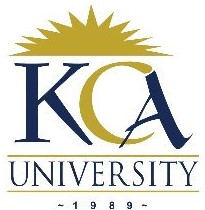
UNIVERSITY EXAMINATIONS: 2017/2018
EXAMINATION FOR THE DEGREE OF BACHELOR OF SCIENCE IN
INFORMATION TECHNOLOGY/ BACHELOR OF BUSINESS
INFORMATION TECHNOLOGY
BIT3202A BBIT304 DISTRIBUTED DATABASES & ADVANCED
DATABASE SYSTEMS
FULL TIME/PART TIME/DISTANCE LEARNING
DATE: APRIL, 2018 TIME: 2 HOURS
INSTRUCTIONS: Answer Question One & ANY OTHER TWO questions.
QUESTION ONE
a) Explain the different ways in which distributed databases are applied in business
organizations (5 Marks)
b) Describe fragmentation correctness rules in distributed databases (6 Marks)
c) Discuss the following data distribution design alternatives in DBMS (10 Marks)
d) Discuss three aspects of distribution transparency in DDBMS (9 Marks)
QUESTION TWO
a) Define the term transaction (2 Marks)
b) What are the challenges faced in distributed semantic integrity control? (4 Marks)
c) Discuss the following types of semantic integrity constraints in databases (8 Marks)
i. Data type constraints
ii. Relation constraints
iii. Referential constraints
iv. Explicit constraints
d) Discuss property of transaction that ensure the database remains correct and consistent
(6 Marks)
QUESTION THREE
a) Outline the different types of failures (2 Marks)
b) Discuss some of anomalies that need to be dealt with by the scheduler in controlling
concurrency (6 Marks)
c) Explain the two ways for the Local Recovery Management (LRM) to deal with update/write
operations (6 Marks)
d) In optimistic concurrency control, a transaction’s life cycle is divided into three phases,
discuss these phases (6 Marks)
QUESTION FOUR
a) Explain the following types of table locks in Oracle (6 Marks)
i. Row Share (RS) Table Lock.
ii. Exclusive (X) Table Lock.
b. Discuss the three Two-Phase Locking in Distributed Database Systems (6 Marks)
b) Explain the benefits provided by distributed databases (8 Marks)
QUESTION FIVE
a) In a distributed system, data may be fragmented, and each fragment can have a number of
replicas to increase data availability and reliability. Discuss the objectives that must be
considered while designing the fragmentation and allocation of these fragments to different sites
in a distributed system (10 Marks)
b) A Distributed DBMS controls the storage and efficient retrieval of logically interrelated data that
are physically distributed among several sites. Discuss the components of a distributed DBMS.
(10Marks)
